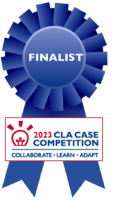USAID/Peru’s Adaptive Management in Rapidly Shifting Contexts
Resources

Necessity is the mother of invention. So goes the saying, and so it was with USAID/Peru’s 2022 Mid-course Stocktaking. Just 13 months after the approval of USAID/Peru’s 2020-2025 CDCS, three dramatic events rapidly ushered in the biggest shift in programming context that Peru had experienced since the return to democracy twenty years prior. The first was the triple crisis of the COVID-19 pandemic, whose repercussions provoked a sudden erosion of living standards that undid decades of development progress. Second was a new government that had raised the prospect of ending collaboration with USAID during the campaign. And third was a series of new policies from the Biden Administration of particular relevance to Peru.
Fortunately, the Mission had laid the foundation for a robust CLA culture with a participatory CDCS development process in 2020. A strong Mission MEL Team, led by the Regional Program Office (RPO), included members of each technical office. Mission leadership in the Front Office and RPO were advocates for collaborative strategy processes based in evidence and learning. And the MEL platform implemented by EnCompass LLC with All In for Development brought deep skills in adult-centered facilitation and evidence generation, having become a “trusted advisor and critical friend” through facilitating CDCS workshops in 2020.
Together, these actors charted a course for an ambitious early stocktaking exercise that ultimately resulted in substantial changes in organizational structure and the theory of change. In so doing, the Mission not only lived the principles of adaptive management by making changes before the programming cycle would normally mandate, it also substantially advanced in its transformation into a mature learning organization with systematic pause and reflect processes and transparent decision-making.



